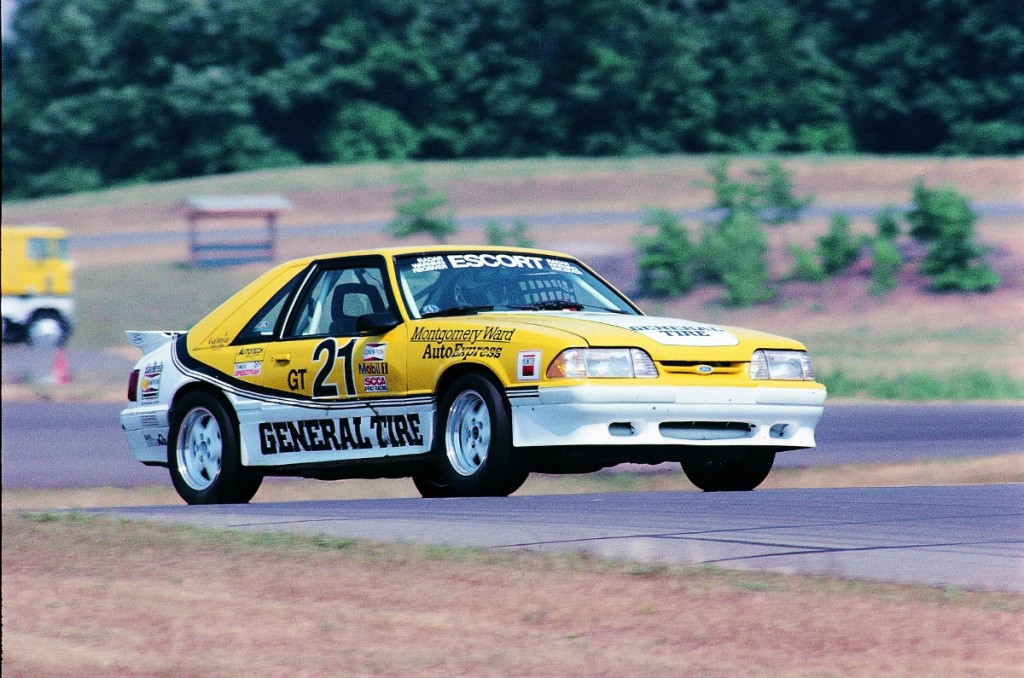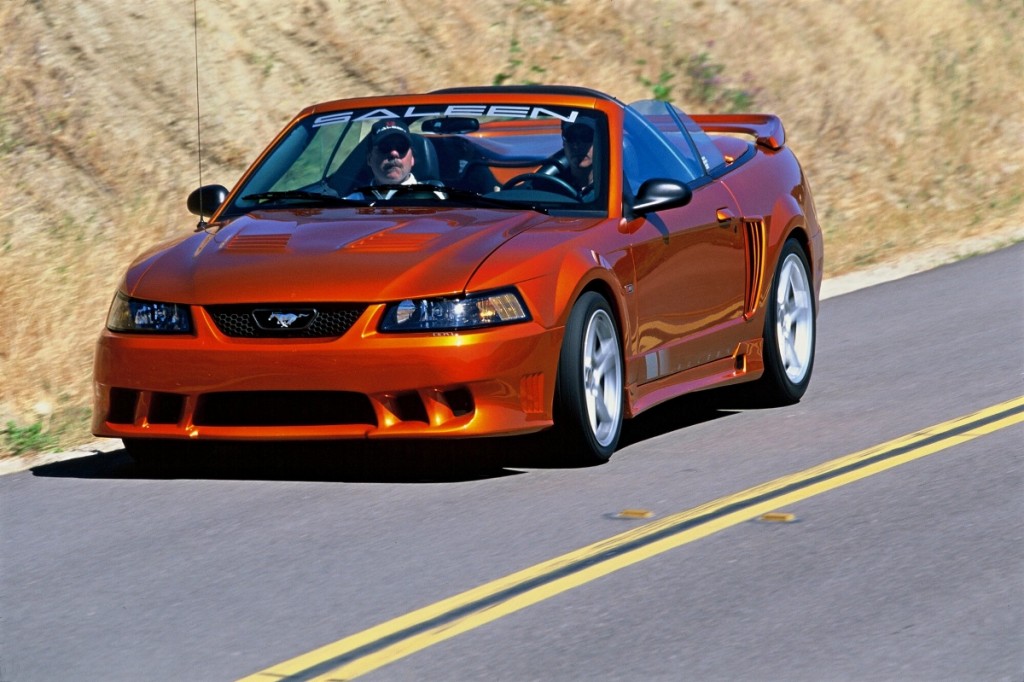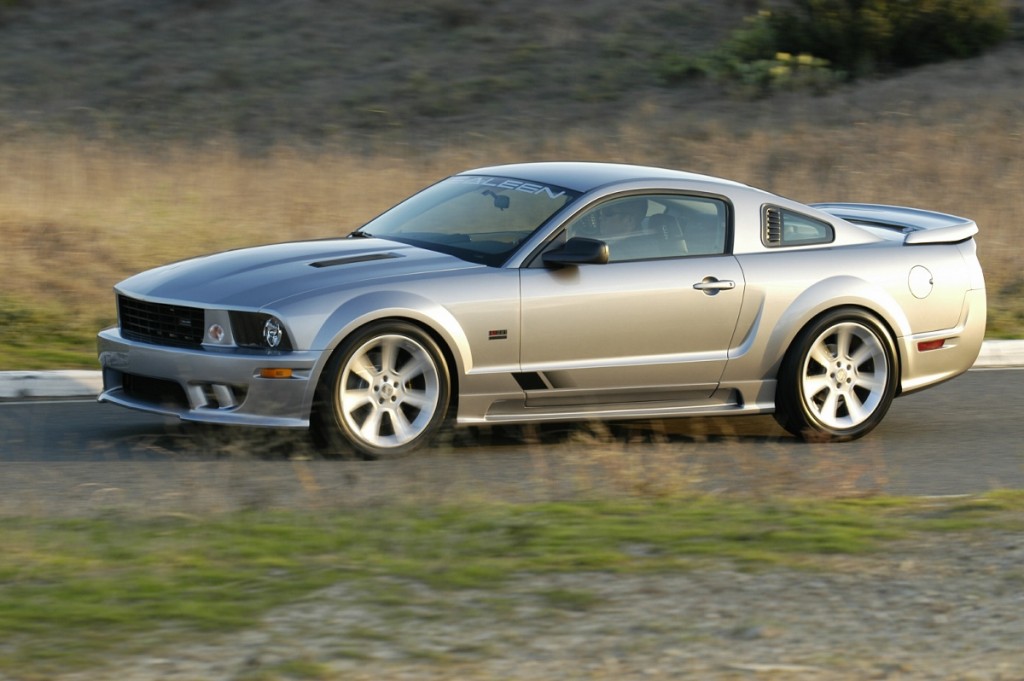An innovative and colorful car builder, Steve Saleen’s route to automotive manufacturer stardom is an American success story like no other
Words: Cam Benty; Photos: Saleen Automotive and Donald Farr
Winning your first time out is the stuff of fairy tales. Winning at Riverside International Raceway in 1972 against a host of legendary racers — well, no one would write that story for fear of being laughed off the grid.
But, that was truly the case for Steve Saleen, founder and namesake of Saleen Automotive. Wheeling his 1966 Shelby GT350 through the Ss of Riverside, he collected a win at his first race. Clearly, that accomplishment fed the fire for what has become an amazing automotive career, both behind the wheel and (most importantly) behind the desk building the cars enthusiasts lust for.
It was his success racing his Shelby that led to an offer to go racing in Super Vee with another legendary racer who was moving from off-road to asphalt, hoping that little Super Vees would be the ticket to the big time for him, as well. As history now notes, Rick Mears, who was Saleen’s Super Vee teammate, did in fact make a name for himself.

Saleen’s true breakthrough year was 1987, when he fielded a three-car team and collected the championship in sports car competition. This also signaled a new life-long partnership for Saleen with General Tire.
From the Super Vee success, Saleen moved to Formula Atlantic Pro (he purchased his racecar after selling his home in southern California), where he faced competition from some of the all-time driving greats, including Gilles Villeneuve, KeeKee Rosberg, Bobby Rahal, and Danny Sullivan. Saleen was very successful in competition, which led to his move to racing Pontiacs and the sports car racing circuit.
If you were racing in the higher levels of competition back in the 1980s, you undoubtedly would have known about Steve Saleen and his efforts to put a Pontiac in the winner’s circle at places like Road Atlanta, Laguna Seca, and Road America. Nicknamed “Gas” Saleen for the obvious racing metaphors that it generated, his success behind the wheel received great honor and caught the eye of Michael Kranefuss, the highly respected director of Ford Special Vehicle Operations (SVO).
After a series of discussions with the SVO team, and the promise of testing the waters to develop conceptual Saleen-designed performance cars, “Gas” began to develop his new plan. While Kranefuss had envisioned a line of 4-cylinder turbocharged cars similar to his Mustang SVO offerings, Saleen felt an American audience would better receive the V-8 power plant. Amazingly, by 1984, Saleen was building cars for the public based on the Mustang GT platform — all V-8 powered.
“We were well aware of the adage Race on Sunday, Sell on Monday,” Saleen says. “We went racing not only because we learned a great deal about engineering efficiency and vehicle construction, but because it was the ultimate marketing tool. “
But, as with most racing efforts, the first time out of the box does not always net perfect results. Case in point was the first race at Sears Point. Saleen, finally behind the wheel of his own car, was out of the race on the pace lap.
“A Corvette ran up the side wall and flipped over landing on my hood,” Saleen recounts. “Our first race with our only car and we were done before the green flag waved.”
With the race car out of commission for the rest of the year, Saleen focused on the street car development, finding an eager audience of performance fans. In 1986, he was back on the racetrack once again — and was able to collect his first win at Mosport in Escort Endurance competition. That win was to light the fuse for 1987, which would become the best year to date for Saleen, both on and off the racetrack.
Championship seasons
If there was a turning point in the evolution of Saleen Automotive, it was 1987. Fielding a three-car team that included a diverse group of drivers, Saleen was to collect his first championship for Saleen racing. To combat a team of very fast Porsches, Saleen and Rick Titus manned the #1 car, while he hired legendary Ford Trans Am heroes Parnelli Jones and George Follmer for the second Saleen race car. In the third car was the very uncommon all-female race team featuring Desiree Wilson (the only woman to win a Formula 1 non-points competition at Brands Hatch) and Lisa Cacares. All three teams proved to be extremely competitive.
By the mid-’90s, Saleen had joined forces with Comedian Tim Allen (Steve jokes that he taught Allen everything he knows from racing, even how to perform the voice of Buzz Lightyear) to form the Saleen/Allen RRR Speed Lab racing team. The team was extremely successful winning SCCA championships from 1995-1999, IMSA competitions, and even running in FIA competitions at LeMans, France; Silverstone, England; Barcelona, Spain; and other major European racetracks.
“But, with all of those wins, I realized that we had taken the Mustang platform about as far as it was going to go in sports car racing,” Saleen says. “This was especially true when you consider we were running against exotic sports cars. We realized that no matter what we changed on the Mustang, it just wasn’t far enough. That was the genesis for the Saleen S7 in 1999 after winning the Grand Am championship.

By 1999, the Saleen Extreme was a combination of unique styling and high-performance engine packages. The new body style, introduced in 1997, was the launch pad for the quickest Saleen to date.
“The decision was made to build the S7 starting in December of 1999, and we showed the first running vehicle in August 2000 at Pebble Beach — a total of nine months from concept to driving vehicle. A lot of people don’t realize that we also developed the entire drivetrain, including the engine block and all ancillary components. The engine is a 7L engine — and is the root of the S7 nameplate.”
The S7 engine shares the same bore centers as Ford FE V-8 because doing water jacketing and gasket development is very time intensive and costly, so Saleen wanted to short cut a few things. The casting of the block and the heads was a first for Saleen, the parts created at a foundry in North Carolina to retain the US-made branding. The rods, cranks, camshaft, inductions system, and pistons were all developed specifically for this engine. Even the electronics were proprietary S7 components.
“In the end, we knew we had a very potent vehicle; the final development and tuning was completed in England,” Saleen notes. “We hired an F1 aerodynamicist to work with us. A lot of our scale model development was completed at the University of Scotland at Glasgow because this facility was affordable and allowed us to receive help from companies like Lola on the composites. RML, a company well versed in sedan racing in England, was instrumental in helping with some of the chassis componentry. The final design and internal componentry we did at our headquarters in Irvine, California.”
The street version of the S7 was well received by the media and buyers, bolstered by some strategic cameos in major movies. To broaden out the exposure for the new S7, it was determined that four cars would compete in four different type of racing series — two in Europe and two in the U.S. In 2001, all four teams won championships. In the U.S., Bingham Racing ran in the Grand Am series, and the Konrad Racing team competed in IMSA. In Europe, RML ran an S7 in the European LeMans series, while Carlos Palau made an excellent showing in the Spanish GT FIA series.
“Our benchmark at the time was the McLaren F1, and we felt that in every category we had a superior car,” Saleen says. “We felt that by taking an American approach, rather than a European approach, made the difference. The European race cars featured larger, heavier powertrains with 10- to 12-cylinder engine layouts. The American-style V-8 engines were much more compact in design, making it better not only in terms of center of gravity, but also polar mass. “
Saleen’s S7 design was further validated in 2004 when Ferrari brought out their Maserati MC12, debuting it against the S7 at Ferrari’s home track in Imola, Italy. The S7 was much more adept at handling the track’s legendary chicane better than any Ferrari-produced car on the track, including the MC12.
In front of the hometown crowd, with much fanfare concerning the invincibility of the new Ferrari race cars at their debut competition, the S7 won the race. Interestingly enough, the V-8 engines were putting out comparable power to the much more sophisticated V-12 engines used by Ferrari.
Business challenges
By the early 2000s, Saleen Automotive was quickly expanding. Saleen was now an exotic car builder, as well as a high-performance muscle car manufacturer. Saleen did not expect to sell as many S7s (in total, just under 100 S7s have been produced to date).
To ride the wave, he thought about building an S5, a less expensive version of the S7, and one that he could build much quicker. However, he was interrupted on that path when Ford Motor Company decided to build the Ford GT — an improved version of the classic GT40 that won at LeMans from 1966-1969.
“Ford came to me and asked if I would be able to build the new Ford GTs (originally called GT40 in the 1960s),” Saleen says. “Key to that build was that Ford mandated the cars be constructed within 75 miles of Ford headquarters in Dearborn, Michigan. So, I obtained a facility in Troy, Michigan, and we built approximately 4,200 Ford GTs from 2004 through 2006. So that the cars could be labeled “Final Assembly Ford,” the car was completed in a Ford Facility in Wixom, Michigan [also overseen by Saleen], before they were delivered to the dealerships.”
With things going well for Saleen Automotive in the early 2000s, with S7s dominating in racing, and production of street cars in full swing, an opportunity arose that was to change the course of history for Saleen and his vision for his company. It signaled the beginning of a rough patch for Saleen Automotive that was to alter the legacy of this brand.

With the arrival of the 2005 Mustang, a whole new breed of Saleens were to take shape. The unique body package was very well received.
“I met with a private equity company that presented a plan for what I saw as a long-term exit strategy on my part. It included a 20- to 30-year royalty payout,” Saleen says. “I entered into the agreement in 2003, right as the Ford GT assembly program began production.
“As some of these stories go, the honeymoon period was very good,” Saleen notes.
“But, as we were winding down the final production of the Ford GTs, we had a difference of opinion as to the way the company should be run. No longer being in control of the company’s direction and vehemently disagreeing with many of the decisions being made by management, I resigned from the company in the spring of 2007.”
The resignation was a huge surprise to the controlling management of the company, whose biggest concern was where Saleen would go now that he had parted from the company that still bore his name. Saleen was still invested in the company, although he no longer managed it in any capacity. It was only 18 months later that the company declared bankruptcy.
To increase Saleen’s challenges, the equity group sold the enterprise to a start-up company in Detroit, one day before closing the original company. Along with the sale, the start-up claimed ownership of everything related to the original company.
It was not until 2012 that Saleen finally won his multiple court cases, allowing him to reclaim usage of his own name, likeness, and intellectual property. But, the battles of the late 2000s were to take their toll in many ways.
“This was an excruciating identity theft crisis that most people will never encounter in their lifetime,” Saleen states. “I always felt that we would get through the court system quicker, but that was not to be the case. The unfortunate thing is that I used up all my resources while the lawsuit was taking place. So, I had to start from scratch and rebuild the entire operation.
“It’s been harder this time because everyone’s expectations are a lot higher, and due to the bankruptcy, I was starting in a hole. I had to climb out of the hole, and my feeling right now is that I’m not quite out of the hole yet, but we’re pretty close to where I can now start to move the company at a much faster pace.”
As Saleen is well aware, the car industry is a very capital-intensive business and goes through many business cycles. For that reason alone, it takes a lot of dedication to get through those down times. His many years in the business have given him great perspective.
“I’m very excited about the new products we offer,” Saleen says. “We just finished the debut of our 30th Anniversary Saleens with special Street and Track versions. Truck fans will remember S331Sportrucks, and in November, we will deliver the first of our new Saleen Sportrucks with 700 hp.
“In closing, one thing I can always say is that I never lost track of the customer,” Saleen notes proudly. “We’ve always made sure to make a quality product, enduring product, high-performing product, lasting product, and take care of the person who was the ultimate owner of the product. That franchise has never broken. Despite all the ups and downs, I’ve tried to maintain our integrity. Businesses will always come and go, but that relationship with our customers is always the most important one to me.”
















